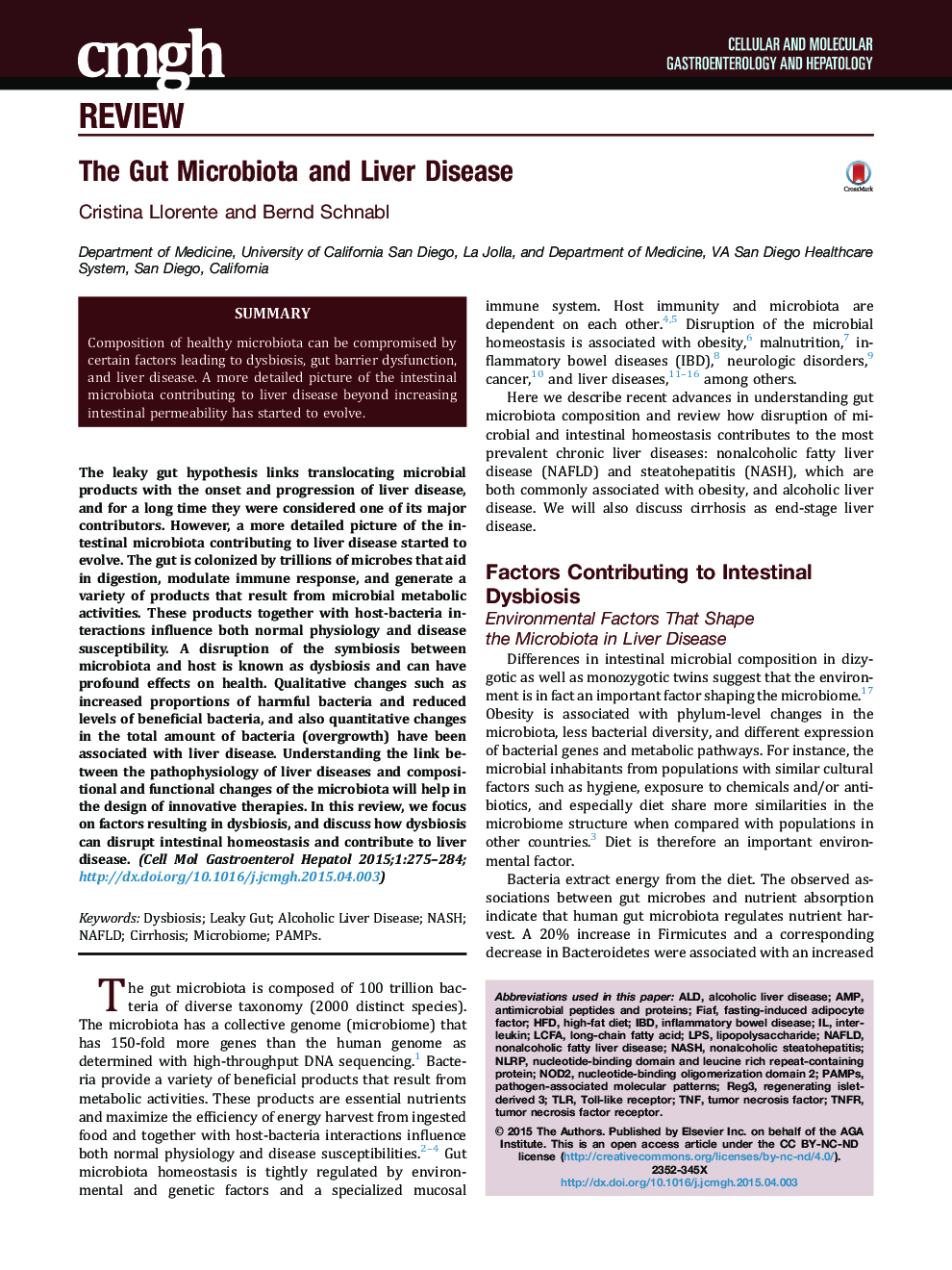| Article ID | Journal | Published Year | Pages | File Type |
|---|---|---|---|---|
| 2040950 | CMGH Cellular and Molecular Gastroenterology and Hepatology | 2015 | 10 Pages |
The leaky gut hypothesis links translocating microbial products with the onset and progression of liver disease, and for a long time they were considered one of its major contributors. However, a more detailed picture of the intestinal microbiota contributing to liver disease started to evolve. The gut is colonized by trillions of microbes that aid in digestion, modulate immune response, and generate a variety of products that result from microbial metabolic activities. These products together with host-bacteria interactions influence both normal physiology and disease susceptibility. A disruption of the symbiosis between microbiota and host is known as dysbiosis and can have profound effects on health. Qualitative changes such as increased proportions of harmful bacteria and reduced levels of beneficial bacteria, and also quantitative changes in the total amount of bacteria (overgrowth) have been associated with liver disease. Understanding the link between the pathophysiology of liver diseases and compositional and functional changes of the microbiota will help in the design of innovative therapies. In this review, we focus on factors resulting in dysbiosis, and discuss how dysbiosis can disrupt intestinal homeostasis and contribute to liver disease.
